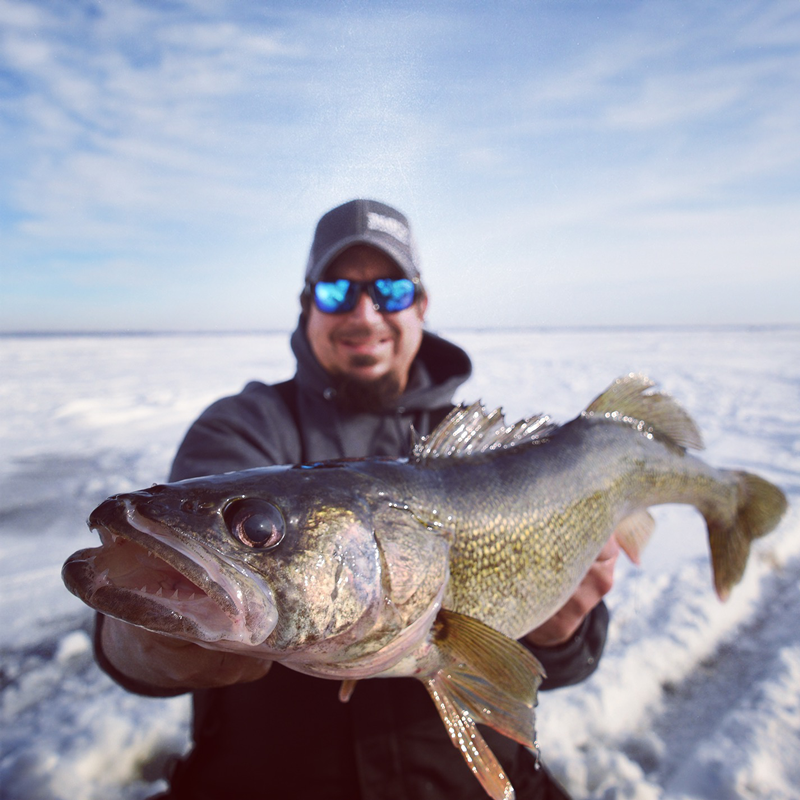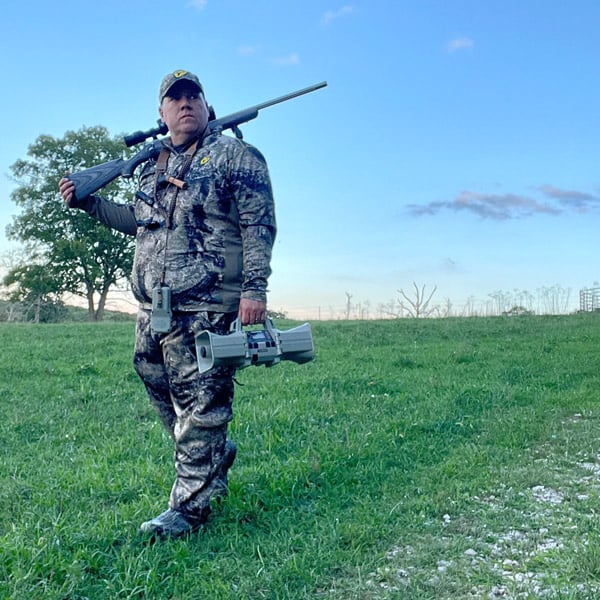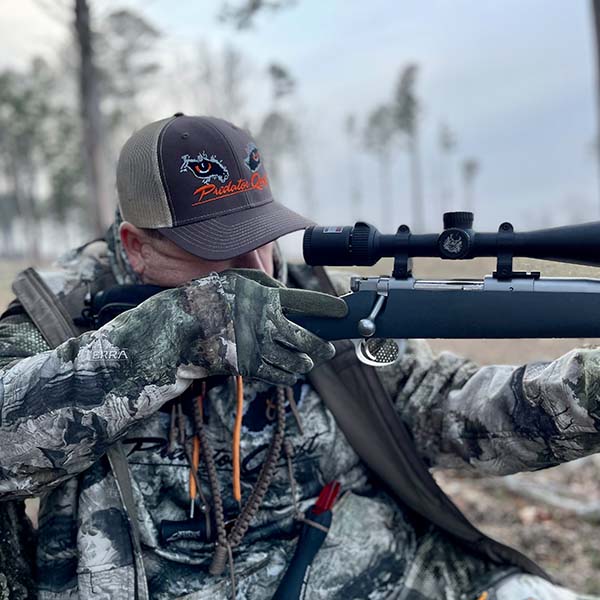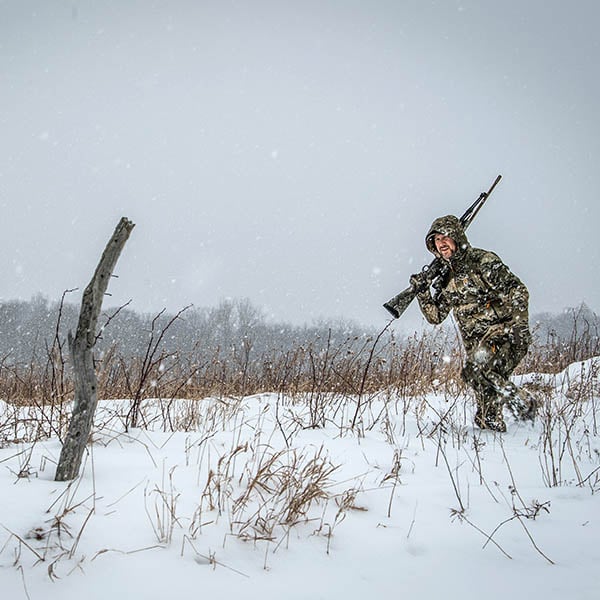Blocker ambassador, Ethan Stubbs, is an all-around outdoorsman. From turkeys, to pheasants, to whitetails, he does it all… And when winter comes around, he’s hunting coyotes, whose population in his local NE Iowa “Driftless Region” is above carrying capacity. As such, there’s no coyote limit, and most Iowa counties pay hunters per each animal brought in to help with management initiatives.
“We’ve got a lot of bluff country, rolling hills, limestone bluffs, open farm land, and clusters of wooded areas,” describes Stubbs. “So a lot of our coyote intel comes from glassing areas and running trail cameras during deer season. We hunt a lot of open fields and a lot of fingers, ditches, little draws, and brush piles. Those are all effective locations. We try to stay away from the big timber because it's a lot harder to pull the coyotes out. They tend to travel a lot more through fields and fingers.”
Armed with .243’s and thermals, Stubbs and company are generally taking animals at distances ranging from 40 to 300 yards. “Each set up is a little bit different, but a lot of times the coyotes will come into real close quarters right to the caller; other times they’ll hang up and you have to take a little bit longer shot.”
Typically, Stubbs hunts as a pair comprised of shooter and caller. “One of us will be running the call, and one guy will be scanning with the rifle scope and thermal.”
In terms of calls, they’re using variousprey distress calls. Then, as coyote mating season begins in February they’ll start running coyote vocalizations—anything from male or female howls to challenge howls to pup distress calls, the closer the coyotes come into range.
“Some guys prefer mouth calls, but electronic calls have become super accurate and are consistent, so that’s what we use,” adds Stubbs.
Mistakes Made
Stubbs is quick to point out there are mistakes to avoid when coyote hunting, lessons he’s had to learn the hard way.
“First, you’ve got to choose your back cover well,” says Stubbs. “The cover you choose to surround yourself in is extremely important.”
Second, he warns hunters not to over-call. “You can mess up a hunt pretty quickly by not picking the right sound and continuing to play it too much. You want to be pretty concise with the sounds you’re using and have a game plan going into the sit.”
Dressing For the Hunt
Although this winter is a bit off with early and ongoing warming trends, Stubbs’ typical coyote hunts find him hunkered down after-dark in anything from sub-zero temps to about freezing during January, February, and March.
“You have to dress for the cold, not a lot of movement, and wind, too,” says Stubbs. “I’ve been wearing Blocker the past seven years for all the various hunting I do, and winter coyote hunting is the same deal. You get a lot of value for your dollar, it keeps you warm, and it’s rugged.”
For Stubbs, that’s the Blocker Predator Quest Turret Half-Zip Jacket, SandHill Extreme Pants, and Shield Series Koretec Polar Weight Top and Bottom.
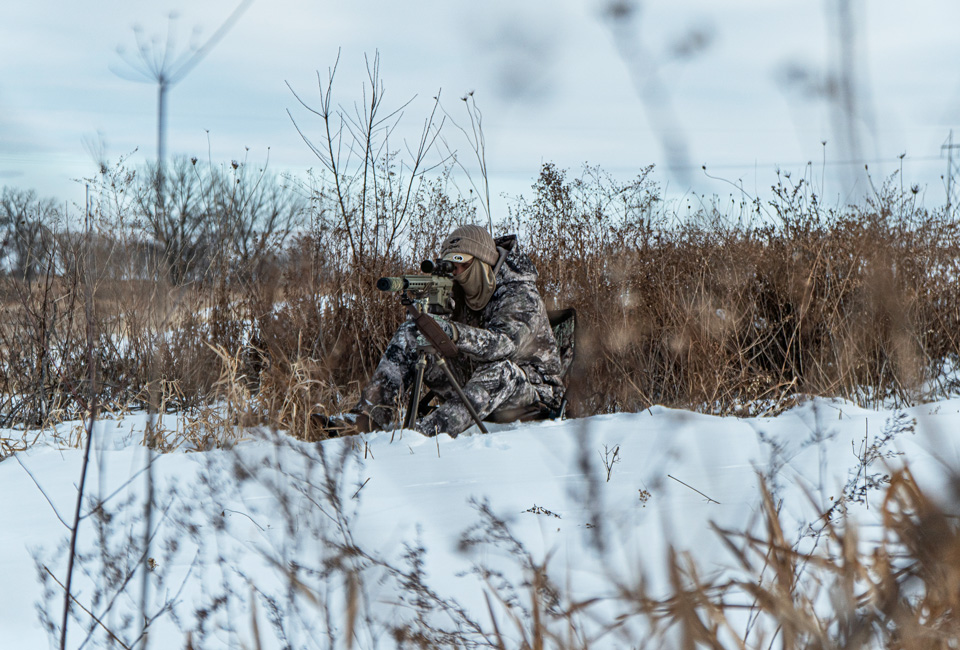
“Just a few weeks ago it was 45 below and I was wearing my Blocker gear and it kept me as warm as you can be in those kinds of conditions. But most of the time we’re hunting between 18 and 25 degrees at night this time of year. The wind will be howling, too, so it’s nice to have a garment that cuts down the wind and is still quiet like the Blocker stuff is,” concludes Stubbs.

